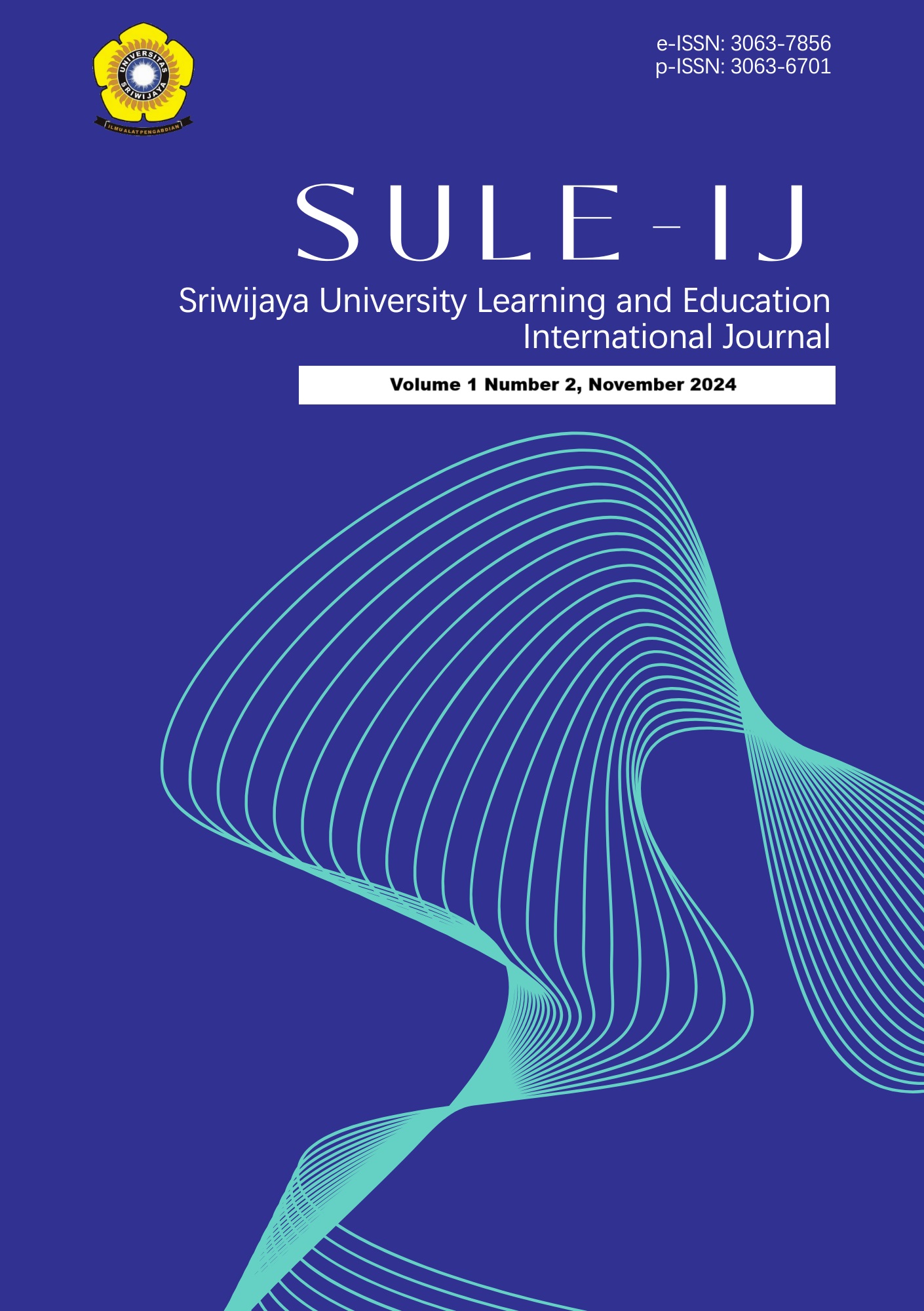The Power Exercise Model of Kick Based on Digital Samsak in Taekwondo
DOI:
https://doi.org/10.55379/98h5q721Keywords:
Digital Punching Bag; Power Exercise ; Taekwondo ;Abstract
This study is about creating and testing a digital bag-based training model to improve kick power in taekwondo. The research follows a development and testing approach based on the Borg and Gall 10-stage model. The training uses a digital bag as part of the equipment, and data analysis is done using a quasi-experimental design. The participants were 70 athletes aged between 12 and 16, divided into two groups: a control group with 35 people and an experimental group with 35 people. The results showed that the Independent Samples Test had a significance value of 0. 000, which is less than 0. 05. This means the digital bag-based training model has a significant effect on improving kick power. When testing how effective the model was in practice, the N-Gain score showed that the control group had an average score of 2. 6%, which is not very effective, while the experimental group had a score of 67. 8%, which is quite effective. The study also created a product with 45 training items based on the digital bag model. These 45 items were reviewed by three experts: a coach, a taekwondo trainer, and another taekwondo trainer. The conclusion is that the digital bag-based training model for kick power in taekwondo is both significant and effective in increasing kick power, and it results in 45 training items for use in taekwondo.
References
Batra, Amit and Marek Zaton. (2017).Effect of High-Intensity Interval Training on Anaerobic Capacity in ITF Taekwondo Practitioners, Journal of Combat Sports and Martial Arts, Volume.8, 61-66<https://doi.org/10.5604/01.3001.0010.5238>.
Bompa, T., & Buzzichelli, C. A. (2015). Periodization Training for Sports Third Edition. Human Kinetics.
Bompa, T.O. (2009). Periodization Theory and Methodology of Training. Human Kinetics.
Do Kim, G., Pieter, W., & Bercades, L. T. (2018). Determinants of performance in university taekwondo athletes. Science and Sports, 33(1), e19–e24. https://doi.org/10.1016/j.scispo.2017.08.005
Ferdiansyah, A., Putro, T. Y., & Isdaryani, F. I. (2022, August). Alat Bantu Latihan Reaksi Ketepatan Tendangan Bagi Atlet Kyorugi Taekwondo. In Prosiding Industrial Research Workshop and National Seminar (Vol. 13, No. 01, pp. 159-166).
Gaamouri, N., Zouhal, H., Hammami, M., Hackney, A.C., Abderrahman, A. Ben, Saeidi, A., El Hage, R., & Ounis, O. Ben. (2019). Effects of polyphenol (carob) supplementation on body composition and aerobic capacity in taekwondo athletes. Physiology and Behavior, 205(March), 22–28. https://doi.org/10.1016/j.physbeh.2019.03.003
Hammad, S., Hammad, R., Djemai, H., Dabayebeh, I.M., & Ghanima, S. (2022). The knowledge level of Taekwondo coaches regarding physical training methods in Jordan. Science and Sports, March. https://doi.org/10.1016/j.scispo.2022.02.001
Harsono. (2017). Sports Coaching, Theory and Methodology. In PT Remaja Rosdakarya (Vol. 4). PT Remaja Rosdakarya.
Huang, Wei and Zheng Cheng. (2014), Exercise Load Research on Common Technical Method in Taekwondo Training Courses, Journal of Chemical and Pharmaceutical Research, 2014, 6(7):1195-1199, ISSN:0975-7384 Coden (USA):JCPRC5.
Irianto, DP (2019). Practical Guidelines for Exercising for Fitness & Health. Andi.
I WynDedy, I Gst Lanang Agung Parwata, Ni Pt Dewi Sri Wahyuni, (2014). The Effect of Circuit Training on Leg Muscle Strength and VO2 Max, Journal IKOR Ganesha University of Education Department of Sports Science, Volume.1/:1-10.
Murniwati, M., Supriatna, E., & Purnomo, E. (2019). Pengembangan mofifikasi alat kecepatan tendangan taekwondo. Jurnal Pendidikan dan Pembelajaran Khatulistiwa (JPPK), 8(10).
Magill, R.A., & Anderson, D.I. (2017). Motor Learning And Control: Concepts And Applications. McGraw-Hill Education.
Putra, A. J., Sukendro, S., & Putra, A. A. (2023). Perbedaan Efektifitas Latihan Skipping Dan Ladder Drill Terhadap Kecepatan Tendangan Dollyo Caghi Atlet Taekwondo. Journal of Sport Science and Fitness, 9(1), 66-73.
Rusman,(2011). Learning Models: Developing Teacher Professionalism. Jakarta: Rajawali Pers.
Rahmani, M. (2014). The Complete Sports Book. Smart World.
Saputri, S. A., Syaifullah, R., & Adi, P. W. Profile of Taekwondo Achievement of Dojang Great Pioneer of the Dragon (GPD) Salatiga. PHEDHERAL, 16(2), 20-32.
Sugiyono. (2017). Quantitative, Qualitative, and R&D Research Models. alfabeta.
Sukadiyanto, & Muluk, D. (2011). Introduction to the Theory and Methodology of Physical Training. Lubuk Agung.
Susianti, E., Lubis, J., Hamid, J., Santoso, Irawan, AA, & Mahyudi, YV (2022). Plyometric Standing Jumps and Box Drills to Improve Momtong Dollyo Chagi Kick in Junior Taekwondo Athletes. International Journal of Human Movement and Sports Sciences, 10(2), 173–178. https://doi.org/10.13189/saj.2022.100206
Tangkudung, J. (2016). Various Research Methodologies and Examples. In Lensa Media Pustaka Indonesia. Lensa Media Pustaka Indonesia.
Tangkudung, J., & Puspitorini, W. (2012). Sports Coaching: Developing Sports Achievement. Cerdas Jaya.
Winarno, ME (2011). Research Methodology in Physical Education. Malang: Media Cakrawala Utama Press.
Downloads
Published
Issue
Section
License
Copyright (c) 2024 Deden Budi Rosman, Iman Sulaiman, Fahmi Fachrezzy, Ibraheem Musa Oluwatoyin (Author)

This work is licensed under a Creative Commons Attribution-ShareAlike 4.0 International License.




















